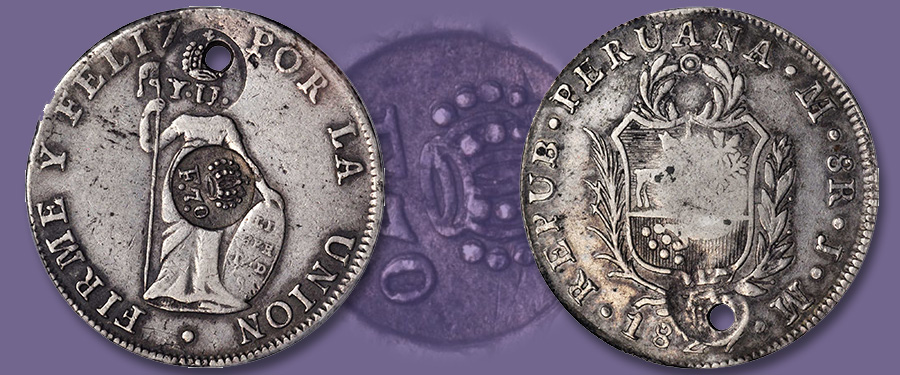
The countermark series of the Philippines is quite vast with a whole array of coins serving as hosts. Utilizing coins ranging from the Spanish colonial period to the early republics of the Americas, and even some from Europe, these countermarks are usually applied to the obverse of the host as stipulated by the decree of 2 October 1832. These markings in their abbreviated form "F.7.o" (for Ferdinand VII) and, similarly later on, "Y.II." (for Isabella II) were applied with a hand-held punch. Prior to the punch change from the earlier "F.7.o" to the more numerous "Y.II.," a decree was issued on 27 August 1834 stating that all pierced coins were no longer legal tender. This, of course, did not sit well with the local inhabitants and nearly caused an uprising. In order to keep the peace and to prevent a rebellion, the government at Manila issued the decree of 4 September 1834 stating that all holed coins were to be brought to the countermarking office for authorization and would again become legal to circulate freely. The authorization came in the form of countermarks applied to both sides of the perforation as seen on this week’s October CCO (Collector’s Choice Online) featured highlight—a Filipino 8 Reales with an F.7.o in the center of the obverse and Y.II. on each side surrounding the perforation, all on an 1827 Peruvian 8 Reales host coin.
These fascinating rarities are an integral part of this heavily collected and highly sought after series of Filipino numismatics. The countermarks applied to the perforations were done so at the same time, though they are seldom encountered with only one countermark over the hole. Nearly all of the countermarks on perforated examples can be traced to non-perforated pieces whereby the countermarks were applied in accordance with the original decree. The linking of issues countermarked over the holes to other examples—along with perforated survivors that contain previous countermarks, namely those of Ferdinand VII (F.7.o)—adds a layer of complexity of which many Filipino scholars were not aware until just a few years ago. At that time, I had embarked upon a massive research project documenting several thousand examples of such countermarked pieces. During my research, I was able to locate approximately 70 different perforated examples, thus allowing for a separation into four major sub-categories: both sides of the perforation; both sides of the perforation (with previous countermark); one side of the perforation, and one side of the perforation (with previous countermark). From the second of these sub-categories, I have documented just 21 examples including the present piece. The provenance of this specimen known to us includes The Money Company auction from 25 June 1979 (lot # 643). It has also been plated in the 1979 work "Monetario De Las Islas Filipinas" by Angelita G. de Legarda and Jose P. Bantug, both famous Filipino numismatists.
To view our upcoming auction schedule and future offerings, please visit StacksBowers.com where you may register and participate in this and other forthcoming sales.





